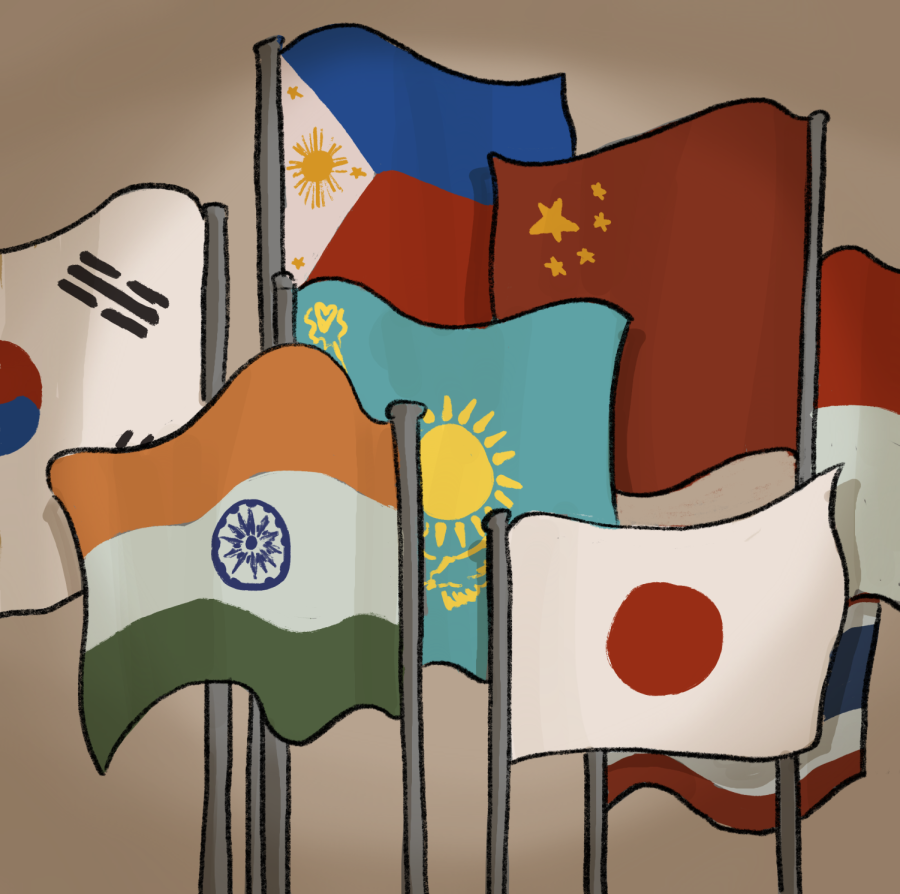Cultural Isolation in College
June 13, 2023
My brother’s absence was felt the second he left home for college. Every time he comes home, he always scarfs down my mother’s cooking and groans to us about how much he misses her Indian food and the smell of incense. My brother’s homesickness is not an uncommon occurrence. Homesickness is something that every college student experiences when being away from home, but that feeling is amplified when students are separated from aspects of their culture. This is a frequent problem, and it severely affects students mental health and their academics. The National Library of Medicine states, “Seventy percent of university students have been found to experience homesickness.” This feeling of isolation is especially amplified for those who were involved in their cultural upbringing. Sophomore at the University of Washington. Rishi Bathina states, “I am always so excited to be able to come home. I miss my mom’s cooking and all the nagging calls from my relatives. It was so hard for me initially because I could not stand being away.” An issue that is easy to overlook is the feeling of isolation at a diverse university. As we enter a new socially aware age, more colleges place an emphasis on diversity and the importance of different experiences. However, these attempts often seem extremely commercialized and fake.
Colleges are often advertised with diversity in their commercials and brochures, but more often than not, people of color do not feel safe and represented in college spaces. Frontiers in Public Health conducted a survey in which their results stated that “participants who identified as POC, LGBTQIA, and/or female characterized the current UWSPH [University of Washington School of Public Health] climate as ‘somewhat uncomfortable’ or ‘very uncomfortable’ more often than their white, male, and non-LGBTQIA peers, who often expressed a ‘very good’ level of comfort.” This clear contrast makes it hard for people to truly understand the experiences that minorities face. Additionally, this makes progress harder to achieve as people of color are left to fend for themselves in spaces where they are already disadvantaged. Sophomore Kamarrie Spencer states, “Whenever I hear a white friend that I trust and love make an offensive joke about race, my heart drops. That feeling of betrayal is never easy to deal with.” The misguided belief in safety makes students feel uneasy as they are put into an environment that is more difficult to adjust to than those who feel comfortable.
Furthermore, students who are uncomfortable and anxious in their environments are more likely to attempt to assimilate in ways that damage them in the long run. Ana Celiea Rodriguez, a student at Rutgers University, states, “The classroom discussions provoked my anxiety because I was concerned with the way white people in the class would perceive me. To sound more educated, I would mask my accent by speaking properly in front of my peers, which often times led to me fumbling on my words.” This poses a large issue as students attempt to blend in themselves instead of being able to fully commit to their education. Assimilation will always be a concept that people of color will deal with, as not doing so leads to feeling unsafe, while assimilation makes one feel even more disconnected from their culture. The anxiety felt here by people of color extends into their academics as the education that students are supposed to be immersed in becomes difficult to be involved in.
To combat these negative feelings, it is important to involve oneself in activities in college. An example of this is through clubs. In high school, most students join clubs to appeal to colleges or find like-minded people. Freshman Alex Karpman states, “I joined JSA to get a better feel for debate, and I enjoy going to it! I have made lots of friends this way.” Karpman’s expanding social circle is due to his involvement in a club and similar to the motivations that college students have for joining clubs. Clubs are essential for college students to build a social circle and become more involved in their school. Clubs provide a safe space for students to meet others that are interested in the club’s overall message which allows for more comfort in the transition to college.
Another way to fight feelings of unease and anxiety as a person of color adjusting to college is to go to cultural areas and fairs. Often times, cultural fairs have people of that culture attending, which allows people to meet others. This addition of those of the same culture to one’s friend circle allows one to embrace their culture and appreciate the diversity of others. Senior Shanthi Hall states, “I love going to cultural fairs because it is always an educational experience for me! Additionally, I have gotten to know several people who have encouraged me to learn more about my past and my ethnic background.
The transition to college is difficult for everyone, but it is important to remember that a large population of college students feels anxious. Reach out to friends and get to know all types of people. Junior Tevi Segal asserts his support for his friends, even those he cannot relate to culturally. It is essential to branch out and get to know people, as isolating oneself when alone can worsen said longing. Surrounding yourself with people who support you allows for a more pleasant college experience.



